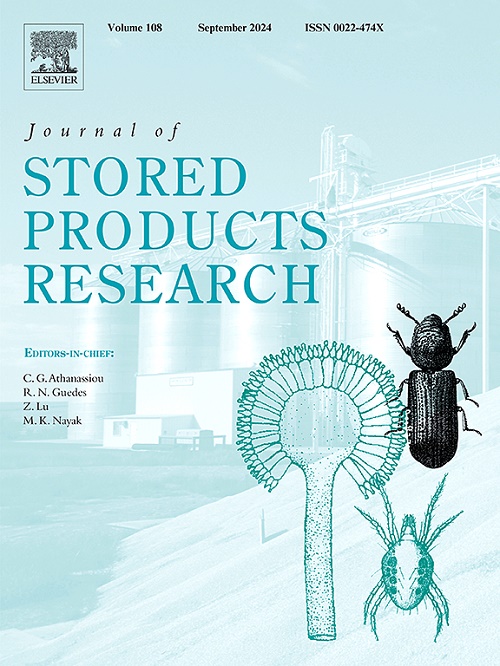Insecticidal activity of rosemary essential oil against primary and secondary storage beetles in the presence and absence of grain
IF 2.7
2区 农林科学
Q1 ENTOMOLOGY
引用次数: 0
Abstract
Rosemary oil, an essential oil (EO) isolated from Rosmarinus officinalis (Lamiaceae), possesses unique properties, functioning both as a food additive and an insecticidal agent. However, the application of EOs, including rosemary oil, as fumigants for stored commodities faces challenges due to their varying efficacy across pest species and the influence of stored grain on EO performance. This study examined the fumigant toxicity of rosemary oil on adults of various storage beetle species, including primary (Rhyzopertha dominica, Sitophilus granarius, S. oryzae) and secondary pests (Oryzaephilus surinamensis, Tribolium confusum), under conditions with and without wheat kernels. The results revealed significant species-specific differences in susceptibility, with O. surinamensis and R. dominica being more sensitive (LC50 values of 9.82 and 16.07 μlL−1, respectively) compared to S. oryzae, S. granarius, and T. confusum (LC50 values of 45.19, 46.44, and 47.74 μlL−1, respectively). The presence of wheat significantly reduced EO efficacy, with declines ranging from 1.5 to 4 times, depending on the species. Notably, this work newly revealed that the tested secondary pests (O. surinamensis and T. confusum) exhibited a greater decrease in efficacy in the presence of grain compared to the primary pests. These findings suggest that while rosemary EO shows potential as a fumigant for grain storage, species-specific sensitivity and reduced efficacy in grain-filled environments, particularly for secondary pests, warrant further investigation.
求助全文
约1分钟内获得全文
求助全文
来源期刊
CiteScore
5.70
自引率
18.50%
发文量
112
审稿时长
45 days
期刊介绍:
The Journal of Stored Products Research provides an international medium for the publication of both reviews and original results from laboratory and field studies on the preservation and safety of stored products, notably food stocks, covering storage-related problems from the producer through the supply chain to the consumer. Stored products are characterised by having relatively low moisture content and include raw and semi-processed foods, animal feedstuffs, and a range of other durable items, including materials such as clothing or museum artefacts.

 求助内容:
求助内容: 应助结果提醒方式:
应助结果提醒方式:


